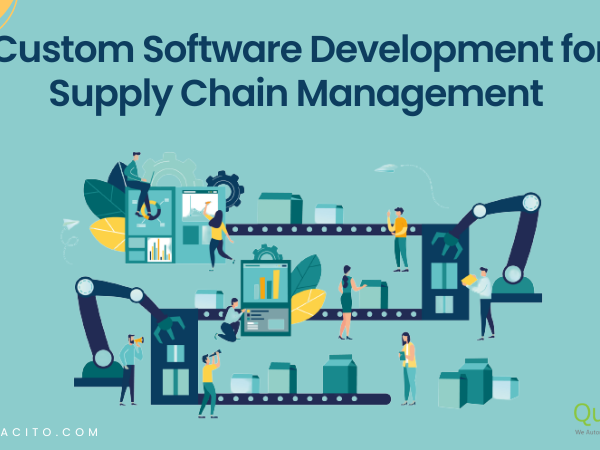
Sales automation software has become an essential tool for businesses to streamline their sales processes, improve efficiency, as well as enhance customer relationships. However, implementing sales automation software comes with its own set of challenges. In this blog, we will explore the common hurdles faced during the implementation of sales automation software and discuss effective strategies to overcome them. We will specifically focus on the context of San Antonio, a vibrant business hub known for its strong sales automation services.
In today’s dynamic business landscape, where competition is fierce, embracing cutting-edge technologies like sales automation software has become a necessity rather than a choice. Sales teams in San Antonio, known for their tenacity and entrepreneurial spirit, understand the significance of staying ahead of the curve. However, even in this thriving business ecosystem, the journey towards successful sales automation software implementation can be arduous.
With businesses rapidly adopting digital solutions, the market is flooded with various sales automation software options, each promising unparalleled advantages of sales automation. Amidst this abundance, decision-makers often grapple with selecting the right solution that seamlessly aligns with their unique business requirements. Moreover, integrating new software into existing systems as well as workflows can be daunting. This can then lead to resistance from team members who may fear disruptions as well as potential learning curves.
While the promise of increased productivity, accelerated sales cycles, and improved customer experiences entices organizations to adopt sales automation software, translating these benefits into tangible results requires a strategic approach. This blog delves into the core challenges that businesses in San Antonio might face during sales automation software implementation. By examining these hurdles and devising targeted solutions, we aim to empower businesses to conquer obstacles and unlock the full potential of sales automation software. Let us embark on this journey together, navigating through the challenges and emerging triumphant in the realm of sales automation excellence.
- Defining Clear Objectives and Expectations
Before embarking on a sales automation software implementation journey, it is crucial to define clear objectives and expectations. Take the time to understand your specific business needs, sales processes, and pain points. Identify key performance indicators (KPIs) that will measure the success of the implementation. With a well-defined roadmap, you can align your expectations with the capabilities of the software and ensure a smoother implementation process.
- Thoroughly Evaluating Vendor Solutions
Selecting the right sales automation software vendor is pivotal to a successful implementation. Conduct thorough research and evaluate different vendors based on their features, customization options, ease of use, customer support, and scalability. In San Antonio, numerous sales automation services providers exist, so explore the local market and seek recommendations from industry peers. Prioritize vendors that offer comprehensive training and ongoing support to ensure a seamless transition and address any challenges that may arise during implementation.
- Fostering a Culture of Collaboration
Implementing sales automation software requires the involvement and commitment of all relevant stakeholders, including sales representatives, managers, and IT professionals. It is crucial to foster a culture of collaboration and ensure that everyone understands the benefits and objectives of the software implementation. Conduct training sessions to familiarize the team with the new software and emphasize its role in driving productivity, improving customer relationships, and increasing sales revenue. Encourage feedback from team members and address any concerns promptly to ensure a smooth transition.

- Planning and Executing a Phased Implementation
Implementing sales automation software in one big bang approach can overwhelm both the team and the system. Instead, break down the implementation process into manageable phases. Start with a pilot project involving a small team or a specific department. This allows you to identify and address challenges on a smaller scale, gather feedback, and fine-tune the software based on real-world usage. As you progress through each phase, communicate with stakeholders and monitor the impact of the software on your sales processes. This phased approach enables you to mitigate risks and make adjustments before rolling out the software across the organization.
- Providing Ongoing Training and Support
Continuous training and support are essential for successful sales automation software implementation. In San Antonio, leverage the expertise of local sales automation services providers to deliver tailored training sessions for your team. Encourage employees to actively participate in learning opportunities, attend workshops, and engage with user communities or forums. Regularly assess the effectiveness of the training and address any gaps or areas where additional support may be needed. By investing in ongoing training and support, you empower your team to fully utilize the software’s capabilities and adapt to any updates or enhancements.
Here’s the Conclusion
Implementing sales automation software can be a transformative journey for any business, but it is not without its challenges. By defining clear objectives, selecting the right vendor, fostering collaboration, planning a phased implementation, and providing ongoing training and support, businesses in San Antonio can overcome these challenges and unlock the full potential of sales automation software. Embracing these strategies will enable organizations to streamline their sales processes, enhance productivity, and drive sustainable growth in the competitive market. With the right approach and commitment, sales automation software implementation can lead to long-term success and customer satisfaction.
To embark on a successful sales automation software implementation, businesses must embrace a proactive mindset and adapt to change. The transformational benefits of such software are vast, ranging from data-driven insights to improved lead nurturing and a more personalized customer experience. Nevertheless, challenges may arise during the integration process that require careful attention and adept problem-solving.
One crucial aspect to remember is that sales automation software implementation is not a one-size-fits-all endeavor. Each business has its unique processes, sales cycles, and customer base. Tailoring the software to align with these specific aspects is essential to harness its true potential.
Additionally, effective communication among all stakeholders is paramount. By fostering an environment where feedback is welcomed, concerns are addressed promptly, and success stories are celebrated, businesses can create a cohesive and motivated team.
Throughout this blog, we will delve deeper into these challenges and explore actionable solutions. From leveraging the expertise of local sales automation services in San Antonio to nurturing a culture of continuous improvement, we will empower businesses to conquer these hurdles, turning sales automation software implementation into a catalyst for success. Embrace the opportunities ahead and discover how, with the right approach and commitment, sales automation software can revolutionize your sales process and elevate your business to new heights of profitability and customer satisfaction.



